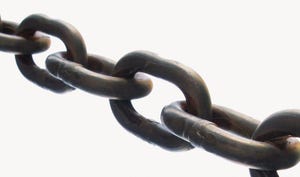You can have the most advanced technology in place, but if you don’t have the expertise to properly deploy, manage and troubleshoot it, it may all be for naught.
October 3, 2014

By Accelerite Guest Blog
 In my prior MSPmentor blog, I discussed why three out of four companies fail disaster readiness, and what MSPs can do to help their customers make the grade. As National Preparedness Month winds down, I wanted to take a different angle and review the three simple, foundational elements of successful business continuity and disaster recovery: people, processes and technologies.
In my prior MSPmentor blog, I discussed why three out of four companies fail disaster readiness, and what MSPs can do to help their customers make the grade. As National Preparedness Month winds down, I wanted to take a different angle and review the three simple, foundational elements of successful business continuity and disaster recovery: people, processes and technologies.
It Starts with People
A sage quote made the rounds a couple months ago among my LinkedIn connections, and it was frequently shared and reposted: “What happens if I train my people and they leave?” Followed by the response: “What if you don’t train them and they stay?”
Another take on this was echoed by Richard Branson of Virgin Air:

While most of us intuitively recognize these as golden pieces of advice and words to live by, with all the competing priorities and division of resources, we need to ask ourselves: Are we keeping the needs and development of our people top-of-mind?
By continuing to invest in your people, you are investing in your own success–and in the success of your customers.
In turn, when evaluating technology vendors, you can pretty quickly assess which companies are already investing in their people—and which companies desperately need to (which should flash warning signs to you).
Several years back, Gartner staked the claim that “more than 99% of firewall breaches are caused by firewall misconfigurations, not firewall flaws.” That’s an immensely bold statement, but when you stop to cogitate over it for a minute, it makes sense. Complexity is the enemy of the IT admin. If your team is not thoroughly and regularly trained on all the nuances of a solution amid rapidly evolving network demands and threats, your IT admin may actually be introducing significant vulnerabilities that could be exploited or could inadvertently createother issues that could disrupt business continuity or hamper network performance.
So, whether we’re talking about firewalls or a hybrid BDR appliance, you can have the most advanced technology in place, but if you don’t have the expertise to properly deploy, manage and troubleshoot it, it may all be for naught.
Strive to Provide an ‘Unusual’ Customer Experience
At Accelerite, we live and breathe what it means to be a customer-first organization. Speaking with some of our customers lately, I’ve actually heard that our customer service is “unusual” It’s unusual in the sense that “the first technical engineer can address all issues from beginning to end. That is not normal in the IT world.” It’s also unusual in the sense that our customer support members can focus in on the root cause of an end user issue—helping the customer resolve the issue, for instance, even if it is an application on the customer’s server.
As a customer enthused, “You don’t have to go through six calls to get to a demo on a product–you can schedule one easily, or even zip right to one on the first call.” Videos, data sheets and other collateral are great, but a solution doesn’t always measure up to the speeds, feeds and other performance indicators of the marketing specs. Therefore, it’s important to see how a solution can perform in a live, real-world environment.
Customers appreciate that, when they call Accelerite support, they can expect intelligent, non-scripted problem solving–at no extra cost. How do we do it? The Accelerite Recovery Support Team amasses decades of IT experience from a wide range of industries, including MSPs, healthcare, financial/trading floor, manufacturing, gaming, ISP hosting, broadcasting and pharmaceutical. As part of our standard support, we provide:
One-on-one onboarding (disaster recovery consulting, migration support, seeding, etc.)
Failover testing and consulting
Around-the-clock emergency support
Dedicated, in-house support–based in the United States
When evaluating vendors, you should identify and try to work with organizations that are committed to ensuring your success, just as you strive to provide the same commitment to your own customers.
Processes are your Blueprint
Another integral component of disaster readiness involves implementing the right processes. An MSP’s breadth of knowledge and familiarity with many different disaster scenarios and technologies can help guide customers down the path of business continuity and disaster recovery planning (BCP/DRP).
Here’s a quick primer breaking BCP/DRP into 4 steps:
1. Risk Assessment and Business Impact Analysis (BIA)
Map out mission-critical services and perform an asset inventory. Log the location of assets and rank their importance. Rank the likelihood of different disaster scenarios (hardware failure, application corruption, flooding, electrical outage, hacker attack, data breach, etc.), and then perform a BIA to calculate the potential impact of various threats. A BIA will help you estimate desirable RPOs and RTOs. Businesses may also evaluate the potential legal impacts of acting/non-acting.
2. Threat Treatment
A security risk assessment/BIA will help you identify security vulnerabilities and rank remediation needs. For example, you would prioritize treatment of threats with a high impact and high likelihood of occurrence over a threat with low impact and low likelihood of occurrence. You can also opt to transfer, or avoid, the risk. For BC/DR, a business may choose to “treat” a weather risk by improving drainage or “avoid” the risk by moving a vulnerable office, or components of it, to a safer site. Implementing the right technology (more on this in the next section) can also be a key part of the treatment.
3. The BC/DR Plan
Create call/communications trees. Identify possible remote work locations so that you’ll be prepared in the event of a site disaster. Scope out BC/DR responsibilities for team members. Publish the plan and post it where it is always accessible (such as online or on the fridge). Train employees on the plan, to make sure they are able to react quickly in an organized, cohesive fashion should disaster strike.
4. Test, Improve and Test Some More
Routinely test, re-evaluate and evolve your business continuity/disaster recovery plan to ensure it meets current and future needs, and to expose areas that can be updated for improvement. Recovery testing, failover connectivity and failback planning are all critical components of a comprehensive plan (as well as areas Accelerite’s support team can help you with). While any BC/DR plan should always be considered a work in progress, you should strive to build upon each regular test through the business continuity/disaster recovery lifecycle.
By helping customers craft and implement a well-thought-out plan, an MSP can better prepare them to take on, and recover from, adversities that may come its way.
Choose the Right Technologies
DR technologies come in so many different flavors and combinations that it can be difficult for an over-stretched IT team to know which ones are the right solutions for their environment. Can the business get by with a local backup/recovery solution, such as AppAssure, or is a hybrid solution that integrates both local and cloud-based recovery as a service (RaaS) the best bet? How can a RaaS cloud sandbox feature help the business actually avoid disaster (such as misconfigurations and disaster caused by human error).
Or, does the IT environment’s complexity indicate that a multicloud/cloud orchestration solution–providing the ability to operate among many clouds–is a more appropriate option? An MSP is likely to have tested, deployed, and managed more solutions across a wider breadth of different environments than has the IT team of most businesses. It’s a huge value for customers to leverage this MSP knowledgebase. The MSP can successfully guide its customers to the tech solution that meets the needs of their unique business continuity and disaster recovery needs, by identifying the right technology classes and the best-fit solutions within those classes.
To learn the 5 Must-Have Capabilities of Your Next Backup & Recovery Solution, check out this new white paper by vExpert David Davis.
Want to learn more on what service providers can do to help their customers become disaster ready? Check out this webinar recording for MSPs.
 Matt Miller is Senior Manager, Marketing Communications, at Accelerite. His experience and interests traverse cloud, cybersecurity, economics, privacy and risk management.
Matt Miller is Senior Manager, Marketing Communications, at Accelerite. His experience and interests traverse cloud, cybersecurity, economics, privacy and risk management.
You May Also Like
